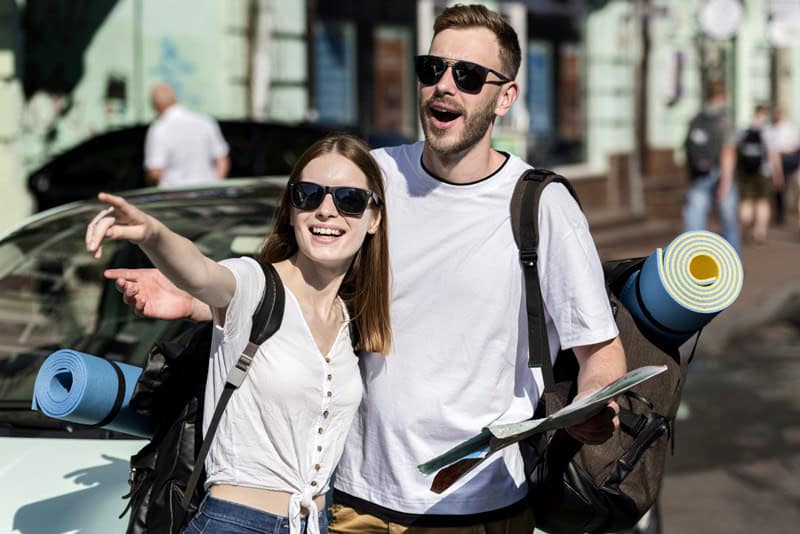Vietnamese is the official language of Vietnam and is spoken by over 90 million people worldwide. It is a tonal language, which means that the meaning of a word can change depending on the tone in which it is spoken. There are six different tones in Vietnamese, which can make it a challenging language for non-native speakers to learn. Want to connect with locals and navigate Vietnam with ease? These essential Vietnamese phrases will get you started!
The Vietnamese alphabet is based on the Latin script, with the addition of diacritics to indicate tones. This makes it relatively easy for English speakers to learn to read and write in Vietnamese. The language has a rich literary tradition, with a long history of poetry, prose, and folk tales. Learning Vietnamese can open up a whole new world of literature and culture to those who are willing to put in the effort.
Basic Vietnamese Phrases for Greetings and Introductions
When visiting Vietnam, it is important to be able to greet people and introduce yourself in Vietnamese. Here are some basic phrases to get you started:
– “Xin chào” (sin chow) – Hello
– “Tôi tên là…” (toy ten la) – My name is…
– “Bạn tên là gì?” (ban ten la zee) – What is your name?
– “Rất vui được gặp bạn” (rat vui duoc gap ban) – Nice to meet you
– “Xin lỗi” (sin loy) – Excuse me/sorry
These simple phrases can go a long way in making a good impression and showing respect to the people you meet in Vietnam. It is always appreciated when visitors make an effort to speak the local language, even if it is just a few basic phrases.
Essential Vocabulary for Travel Situations
When traveling in Vietnam, it is helpful to have some essential vocabulary at your disposal to help you navigate everyday situations. Here are some useful words and phrases to know:
– “Nhà nghỉ” (nya nee) – Guesthouse
– “Nhà hàng” (nya hahng) – Restaurant
– “Phòng tắm” (fong tahm) – Bathroom
– “Bến xe buýt” (ben zay bwit) – Bus stop
– “Cảm ơn” (gam uhn) – Thank you
Having these words and phrases at your fingertips can make your travels in Vietnam much smoother and more enjoyable. It shows respect for the local culture and can help you connect with the people you meet along the way.
Useful Phrases for Ordering Food and Drinks
One of the highlights of visiting Vietnam is the delicious and diverse cuisine. To fully enjoy the culinary delights that Vietnam has to offer, it is helpful to know some basic phrases for ordering food and drinks:
– “Một phần…” (moht fuhn) – One portion of…
– “Có thể xin thêm…” (koh te sin tem) – Can I have some more…
– “Nước ngọt” (noo-uhk ngot) – Soft drink
– “Một ly bia” (moht lee bee-ah) – One glass of beer
– “Tôi muốn đặt món này” (toy moon dat mohn nai) – I would like to order this dish
By learning these phrases, you can confidently explore the vibrant street food scene and bustling markets of Vietnam, knowing that you can communicate your preferences and dietary needs.
Navigating Transportation in Vietnam
Getting around in Vietnam can be an adventure in itself, with a variety of transportation options available. Here are some essential phrases for navigating transportation in Vietnam:
– “Bao nhiêu tiền?” (bow nyew tee-en) – How much does it cost?
– “Xin cho tôi đi đến…” (sin cho toy dee den) – Please take me to…
– “Xe ôm” (say ohm) – Motorbike taxi
– “Xe buýt” (say bwit) – Bus
– “Ga tàu” (ga tao) – Train station
With these phrases in your arsenal, you can confidently negotiate fares, ask for directions, and find your way around the bustling streets and bustling cities of Vietnam.
Polite Expressions and Cultural Etiquette
In Vietnamese culture, politeness and respect are highly valued. Here are some polite expressions and cultural etiquette tips to keep in mind when interacting with locals:
– Always address people with their title and last name, followed by their first name.
– Use “xin lỗi” (excuse me/sorry) when asking for someone’s attention or making a request.
– When receiving something from someone, use “cảm ơn” (thank you) to show gratitude.
– When entering someone’s home or a place of worship, it is customary to remove your shoes.
– When dining with others, wait for the host or eldest person to start eating before you begin.
By being mindful of these cultural norms and using polite expressions, you can show respect for Vietnamese customs and make a positive impression on the people you meet.
Additional Resources for Learning Vietnamese
If you are interested in delving deeper into the Vietnamese language and culture, there are many resources available to help you on your journey:
– Language learning apps such as Duolingo, Rosetta Stone, and Babbel offer Vietnamese courses for beginners.
– Online platforms like iTalki and HelloTalk connect language learners with native speakers for one-on-one practice.
– Books and audio resources such as “Elementary Vietnamese” by Binh Nhu Ngo and “Vietnamese for Beginners” by Jake Catlett provide comprehensive language instruction.
– Language exchange meetups and cultural events in your local community can offer opportunities to practice speaking Vietnamese with native speakers.
By taking advantage of these resources, you can deepen your understanding of the Vietnamese language and culture, and enhance your travel experiences in Vietnam. Whether you are a beginner or an advanced learner, there are plenty of opportunities to continue expanding your knowledge and fluency in Vietnamese.
Originally posted 2024-09-01 05:30:32.


